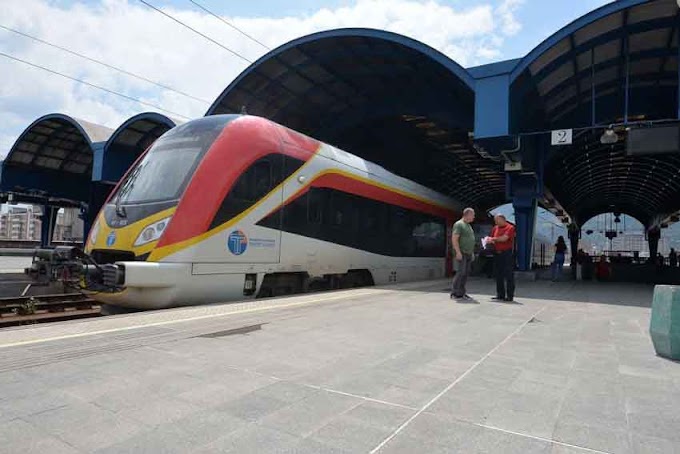Up a winding, tree-lined road ending in a rocky moonscape 17 km southwest of Mavrovo, almost depopulated village of Galicnik welcomes with its traditional houses along the mountainside.
Galicnik village is famous by its countryside and nature reserve, and has well preserved traditional architecture, including an amphitheater in the village square. St. Peter's Day celebrated on the 12th July is a day of splendid costumes, magnificent ceremonies and rituals of the unique Galicnik wedding whose wider significance comes to its crown by entering the treasury of spiritual values of humanity under UNESCO protection.
The Galicnik Wedding Festival is an annual festival in which a selected couple gets married in the traditional "Galicka" style wedding. Traditionally the wedding lasted for 5 days with the main activities on St. Peter's Day (12 July) every year. It was the only period of the year when couples got married.
A century old tradition
Today it is part of the festival "Galicko Leto" (Galicnik Summer) and it is a two-day event held on the weekend nearest to 12 July and it serves as a cultural and tourist attraction. The Galicnik Wedding is an incomparable event that every visitor to Macedonia must experience at least once.
Galicnik wedding is an expression of Macedonian authenticity. To understand the festival's origins, it's necessary to go back to the early twentieth century. At that time, around 5,000 people lived in Galicnik raising sheep. A lot of famous Macedonians were born here and the village was known for its traditions and way of life.
But Galicnik also became a byword for economic migration. Many of the young men from here were forced to search for work abroad -- even as far away as America. They'd always come home to meet up with family and friends, though. So it made sense for them to visit Galicnik at a set time -- and to get married while they were here.
The Galicnik Wedding Festival was therefore born. Back in 1936, a total of 40 couples were married on the same day.
During the wedding, men dance the Teskoto, a shepherd folk dance of the Mijaks, one of the national dances of the Republic of Macedonia, symbolizing the suffering of the Macedonian people through the centuries. Each year, couples from all over Macedonia enter a competition run by the organisers to be the couple that gets to have a "Galichka" style wedding. Every year, a new couple gets the opportunity.
Traditional customs reenacted
In front of the "Upija" fountain, one of the friends shaves the groom; an act which makes the closest relatives rueful because the shaving is a symbol of the separation of the boy from his mother and father and the passage to manhood.
From the groom's house, an entourage of over 50 in-laws goes to the bride’s house. The entourage is led by the bajraktar (flag bearer) and his friends on horses. The horses walk slowly in front of the entourage. Before that, one of the friends goes to the bride's house to ask for permission for the arrival of the in-laws. On the way back he joins the procession.
After the arrival of the in-laws, the flag bearer hands over the flag which is hung by the window. Then one of the groom's friends leads his horse in front of the bride's house where the bride looks at the groom through her ring. The groom kisses the hands of the bride's parents and then they put a towel over his shoulder.
Here are welcomed by the bride who looks through her wedding band and says: “Through this ring I look at you, welcome me to your heart”.
In front of the house the groom's closest relatives sit at a table. The groom's mother gives presents to the bride and then the bride kisses her hand. The bride gets dressed up and ready to go. A groom's friend informs the in-laws that the bride is ready and they all prepare to go. The bride mounts a horse. The procession is led by the flag bearer.
The groom's mother welcomes the bride with a sieve, a cake and a goblet with wine. She circles around the bride three times tapping her on the head with the cake. Then she puts a bridle on her and on the bridegroom's cap. The groom helps the bride to dismount the horse. Then she walks into the house.
The bride, the groom's mother and father, the flag-bearer and the other relatives walk up to the church. The groom's mother carries a kettle and a basil bouquet. She spatters young couple and other guests on the way from the house to the church. A carpet is laid in front of the church and a flag is hung to the right of the entrance.
After the wedding ceremony there is a wedding banquet at the "Upija". The best man resides at the head of the table and the groom calls for a toast. The groom's father and the best man lead the entourage. The bride is taken to the fountain where she fills water jugs. After that the bride leads the bride's dance.
When wedding customs end, the closest relatives say goodbye to the musicians. After some post-nuptial partying, the tourists head home and the citizens of Galicnik have their village back to themselves -- until they, too, head back to Skopje and other places around Macedonia where they now work.
Original and unique costumes
A suggestive scenario, the town architecture and its square make a perfect setting for men and women dressed in their traditional costumes; women in red, white, and black clothes; men in linen trousers, waistcoats, ribbons, and hats that they exchange during the dance.
It must be acknowledged that Galicka wedding is a tourist attraction. However, unlike many other events, this one managed to preserve the atmosphere of an ancient and beautiful folk custom. The Galicnik wedding is the joy of the people worth experiencing along with the colors, the rhythm, and the sun of the Macedonian summer.
The traditional wedding costume of the bride consists of 46 parts and weighs around 25 kilos. Behold some excerpts from the description made by the Serbian geographer Jovan Cvijić in his book entitled La Péninsule balkanique, géographie humaine, published at Paris in 1918:
"The costume of Mijaks, especially female costume, is most characteristic. The most curious piece of male costume, whose use is widespread in some parts of Macedonia, is the cépare or the cépe, a kind of coarse jacket of black cloth which covers mainly the shoulders and back and has some analogy with the cape. In some villages it is called zobonče. The cap of Mijaci, which resembles that of the Montenegrins, is called ćulavče. The rest of the clothes is such a so-door throughout Macedonia, but here everything is in black coarse cloth. […]
If at the male is black rule, at women and children costumes and embroideries are red, a crimson red color which is specific for Mijaks. No suit the Balkan Peninsula is also seeing that this tribe.
On a beautiful summer day, when everyone is outside, one is struck by all that red which contrasts with the gray soil, stone houses and slate roofs. A Galicnik most is a curious sight to see small children, who are healthy, fully dressed in red pants (čakśire), jacket (zobonče) and dolman (dolama).
All parts of the female's costume have the same dark crimson color. The embroidery of shirts in particular are characteristic: the sleeves, from the shoulder, are elegantly embroidered with geometric designs; also around the neck and on the chest of the shirt."
The Galicnik wedding, as one of the most complex ritual performances of the Macedonian cultural legacy, has grown over the course of the past five decades into a genuine Macedonian brand and has also become part of the cultural values of mankind protected by UNESCO.
Finally, as the summer draws to an end, there will be just one person left in the village: that little old lady, Galicnik's sole resident.
SOURCE:













